Questions to Heaven
Questions to Heaven is an installation that takes its name from the poem of the same name, attributed to Qu Yuan who lived during the Warring States Period of ancient China.
The poem, consisting of 172 questions in total, revolves around mysteries and contradictory accounts in legends and mythologies and begins with questions concerning the parts and motions of the celestial Heaven, to questions about the wonders of earth and the life it supports and finally to the realm of mortal men, his destinies and fate.
Separated into three tiers, Heaven, Earth and men from the highest to the lowest tier, 76 of the original questions were included together with four questions by the artist. These were carved on ancestral tablets by the artist’s father, the artist himself, and a machine, to mediate a conversation between the three generations and to highlight the lost of a traditional skill and the wisdom attached to it through the generations.
With the traditional carving skill increasingly becoming obsolete in today’s society, will technology eventually replace the ancestral tablet carver with no one, not even the son, willing to succeed his skill? Will the artist be filled with guilt? Can the machine match the finesse and quality of a carver, and will the mass-produced work still be able to convey the same message that it used to uphold. What will become of our coming generations if the skill and its wisdom are lost?
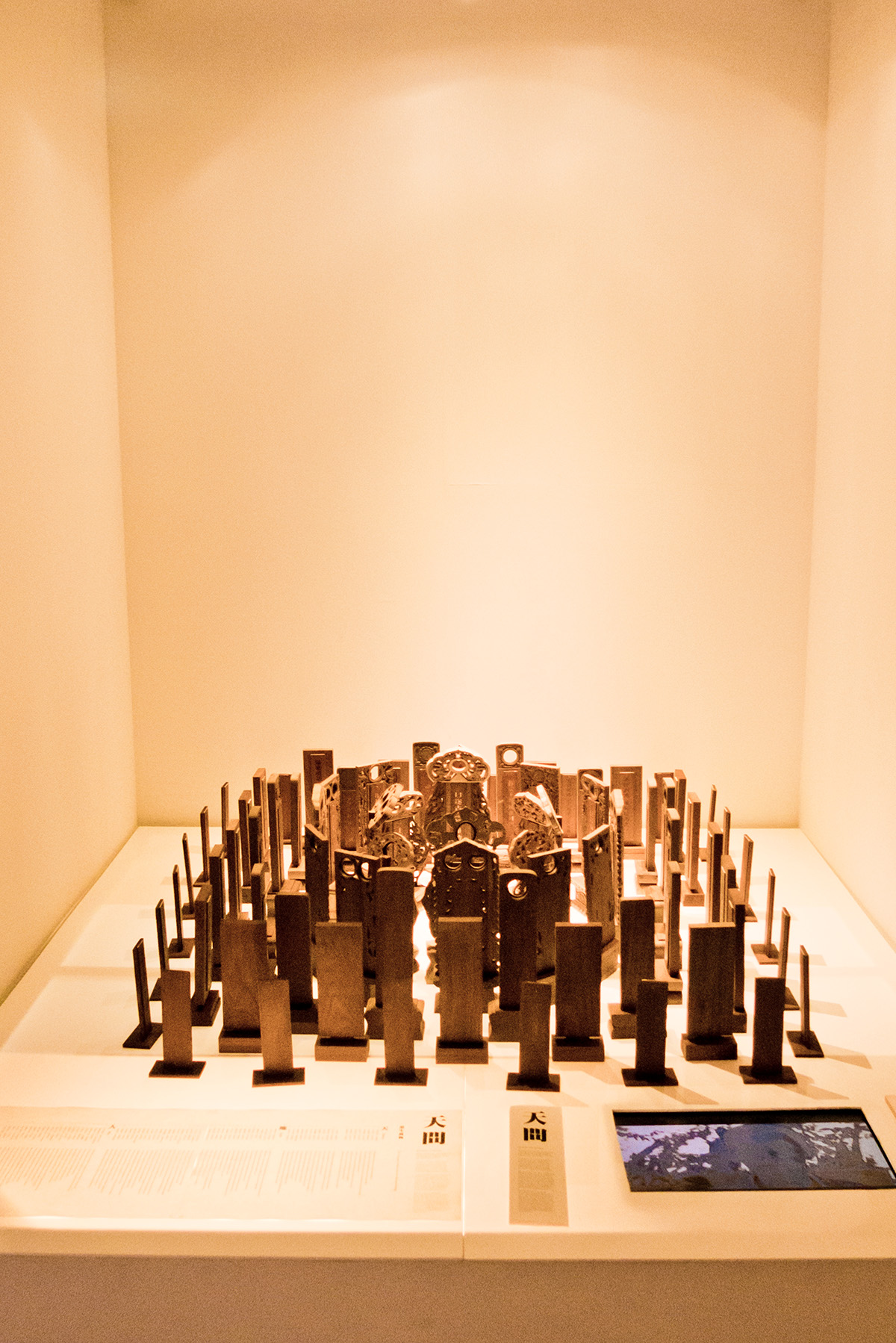
Ancestral Worship
Ancestral worshiping is a common religious Daoism practice that is based on the belief that deceased family members have a continued existence in an afterlife and watches over the affairs of the family. The ancestral tablet serves more than just a record of the ancestor’s name, birth and death date but also represents the spiritual presence of the deceased, an idol of worship for their descendants. These are normally placed in ancestral halls, bearing only the family surname. Thus it performs a non-religious function, i.e., to cultivate kinship values like filial piety, family loyalty and continuity of the family lineage. This can be observed by the form of the tablet itself, its phallic symbolism as a strong reinforcement of the idea of generations of offspring. From a philosophical point of view, it acts as an axis mundi, the central line of communication from Earth to Heaven, a conversation between men and god, the descendant and the ancestor with words carved or non-carved on the tablet itself.
INSTALLATION


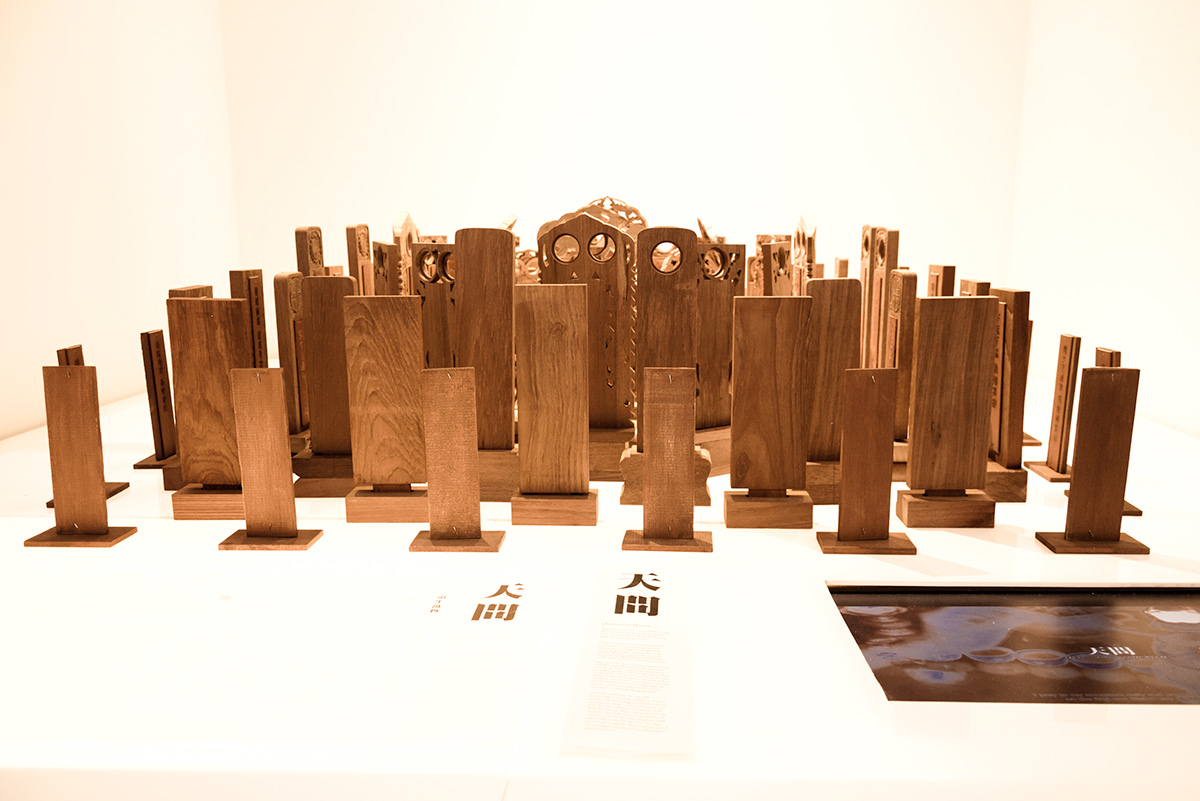
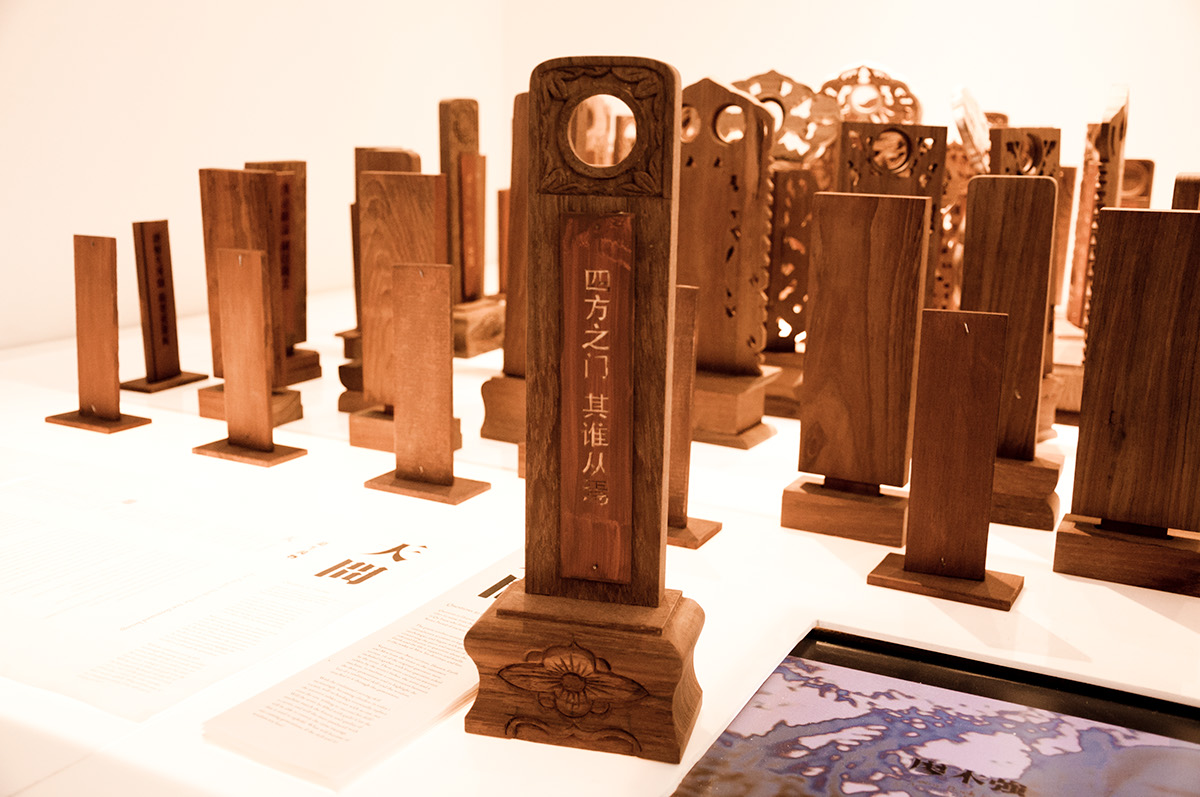
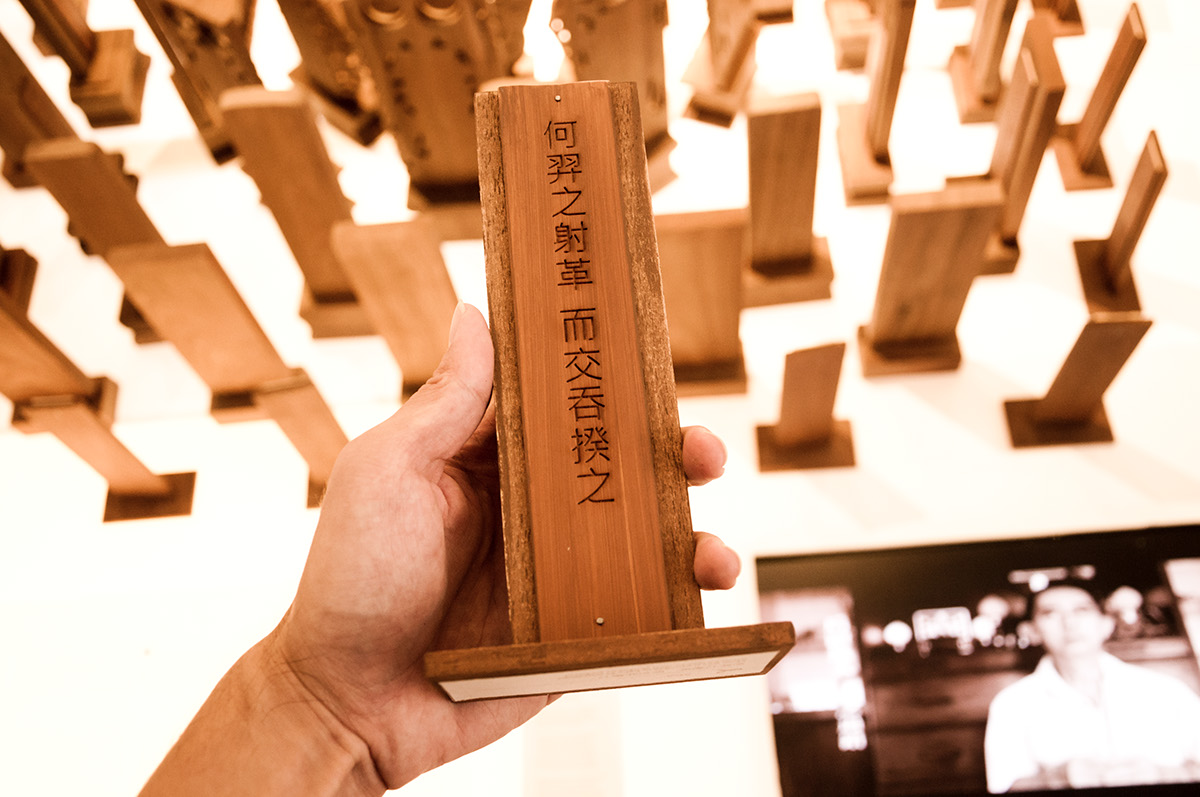

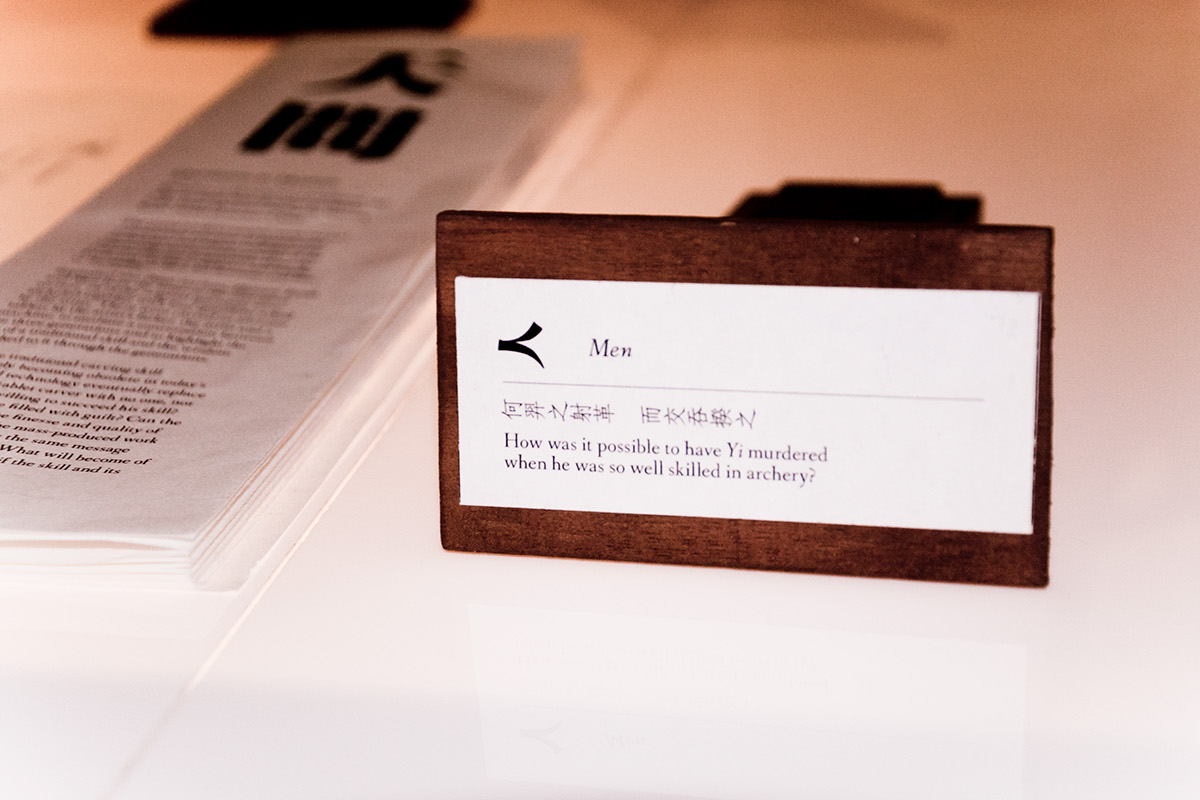
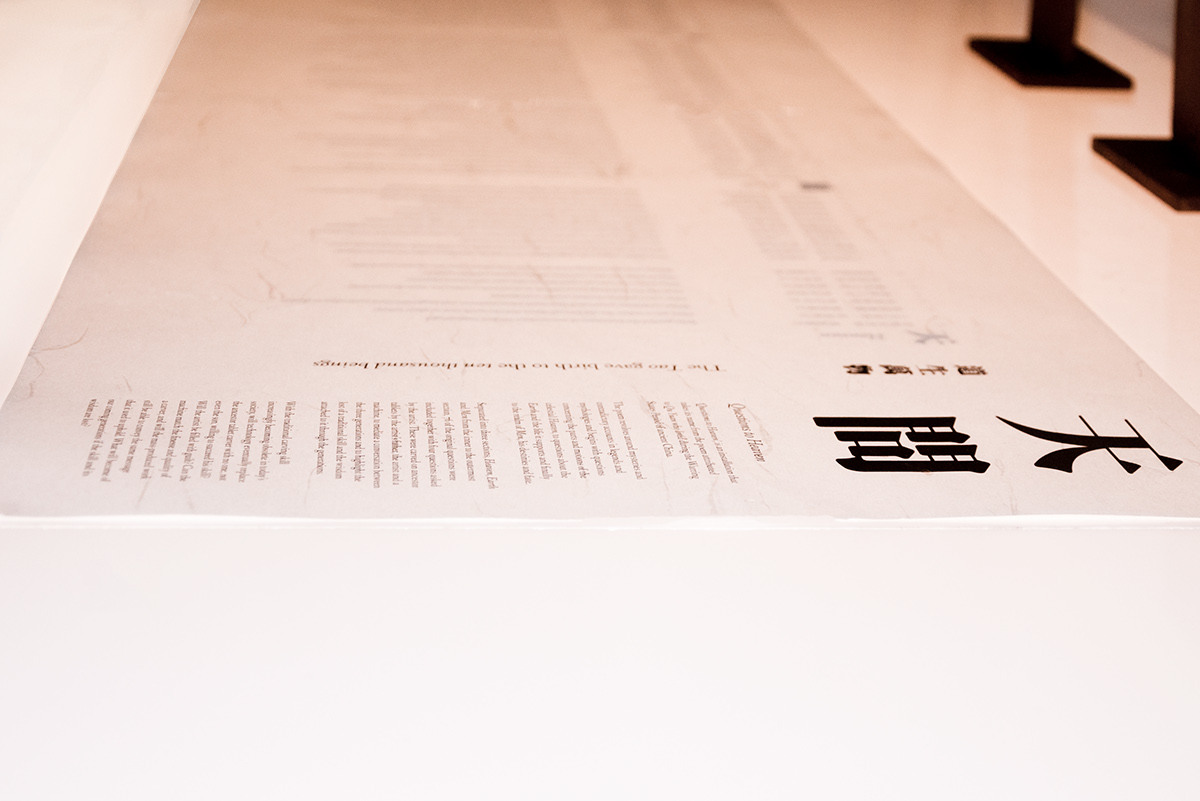
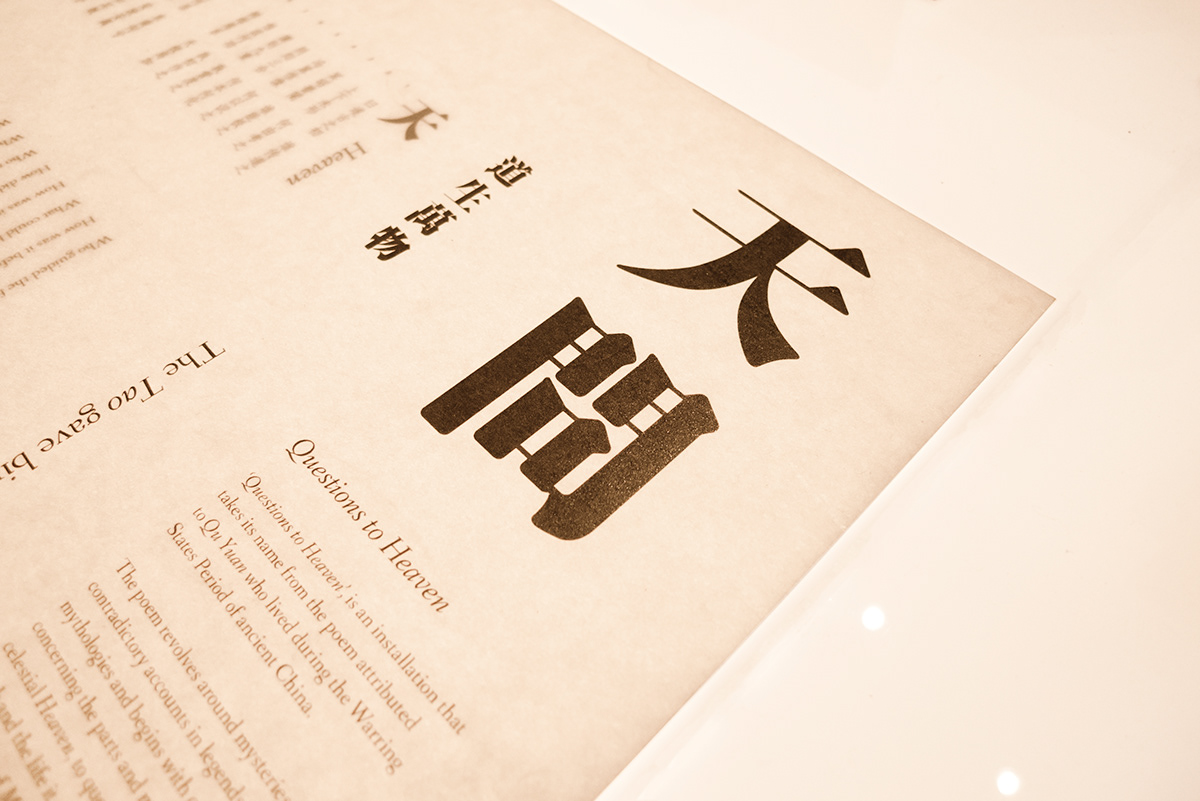
Dao gives rise to one
One gives rise to two
Two gives rise to three
Three gives rise to all things
(Lao Zi, 42:1)
One gives rise to two
Two gives rise to three
Three gives rise to all things
(Lao Zi, 42:1)
VIDEO DOCUMENTATION
Music "Allt varð hljótt' by Ólafur Arnalds.
https://soundcloud.com/erasedtapes/olafur-arnalds-allt-vard-hljott
https://soundcloud.com/erasedtapes/olafur-arnalds-allt-vard-hljott
PHOTOGRAPHY

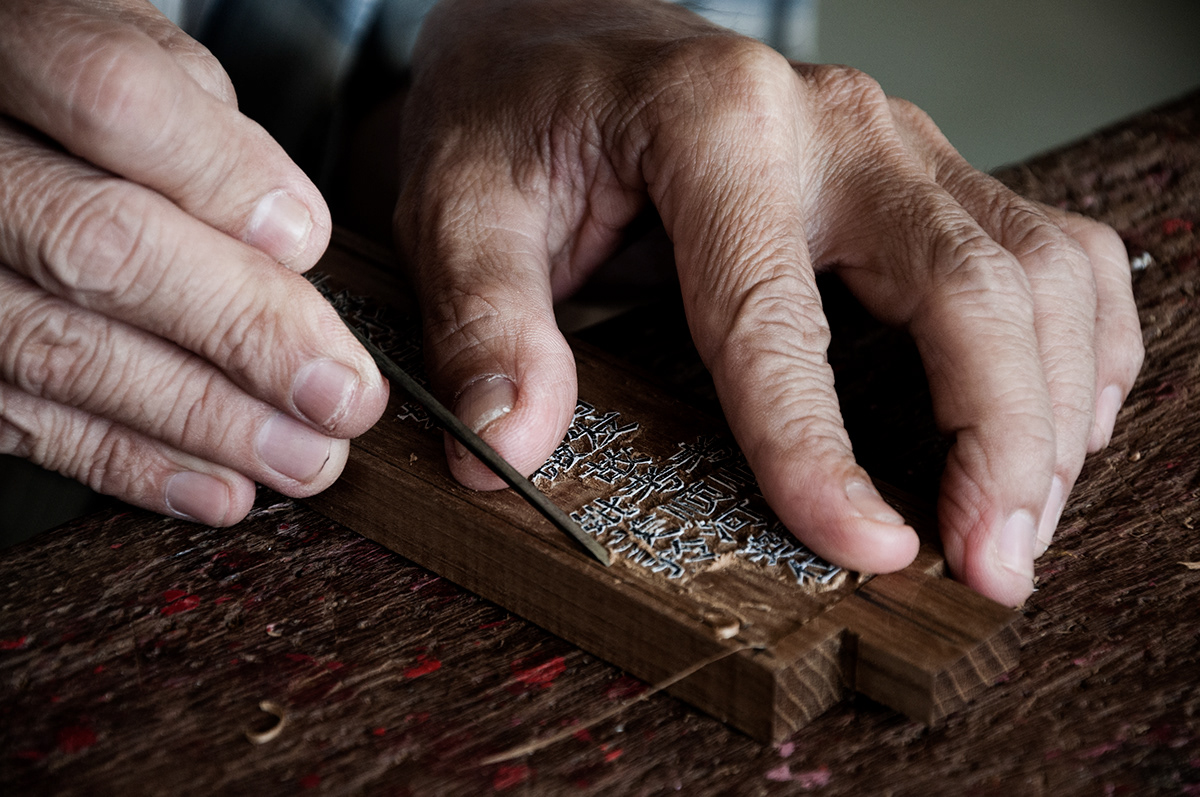
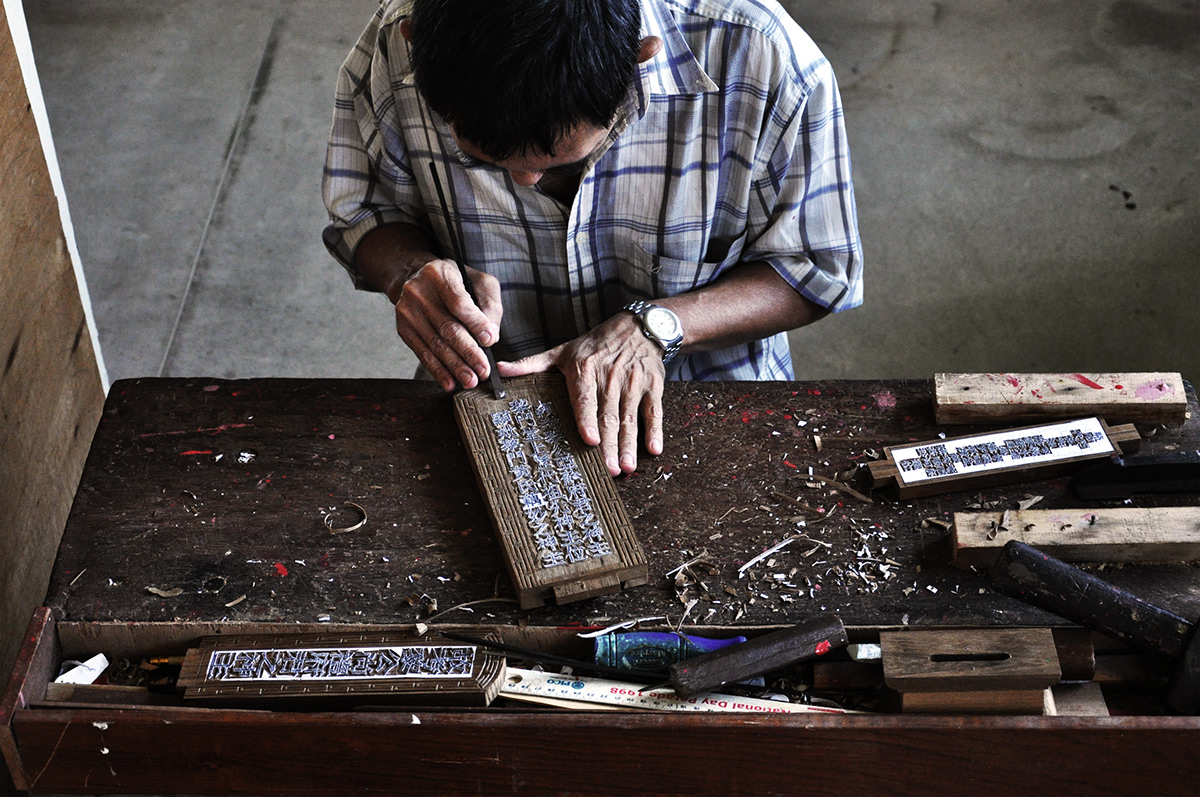
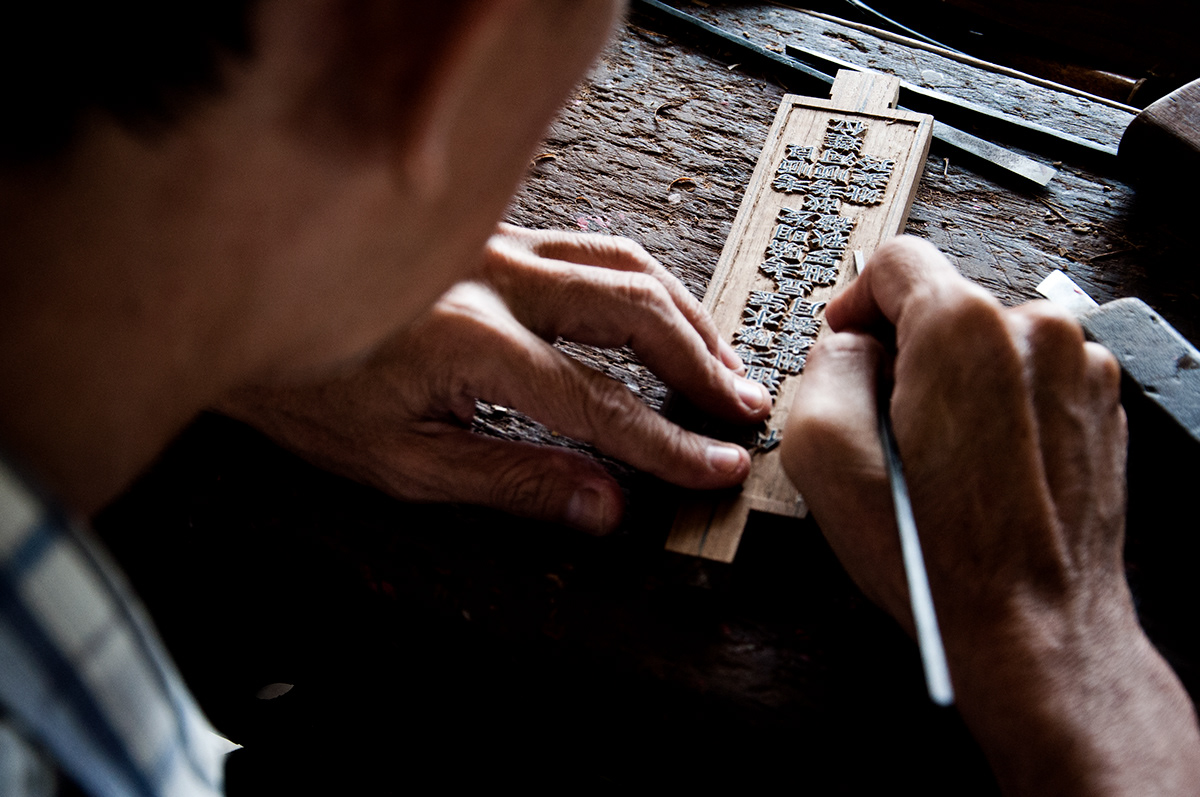
LANGUAGE

The fading of the tradition can be observed in carvings, from one that is skilfully handcrafted, to one that lacks the virtuosity and eventually to one that is mechanised, replacing the role of the tablet carver.
Comparing the three, the words carved by the father is refine and sophisticated with the use of differences in the level of depth and angles to bring about different line weights; the words carved by the artist/son lacks the technical virtuosity shown by his father, displaying almost unrecognisable character form and uncertain multiple strokes; the words carved by the laser cutter is charred although they were precisely cut.
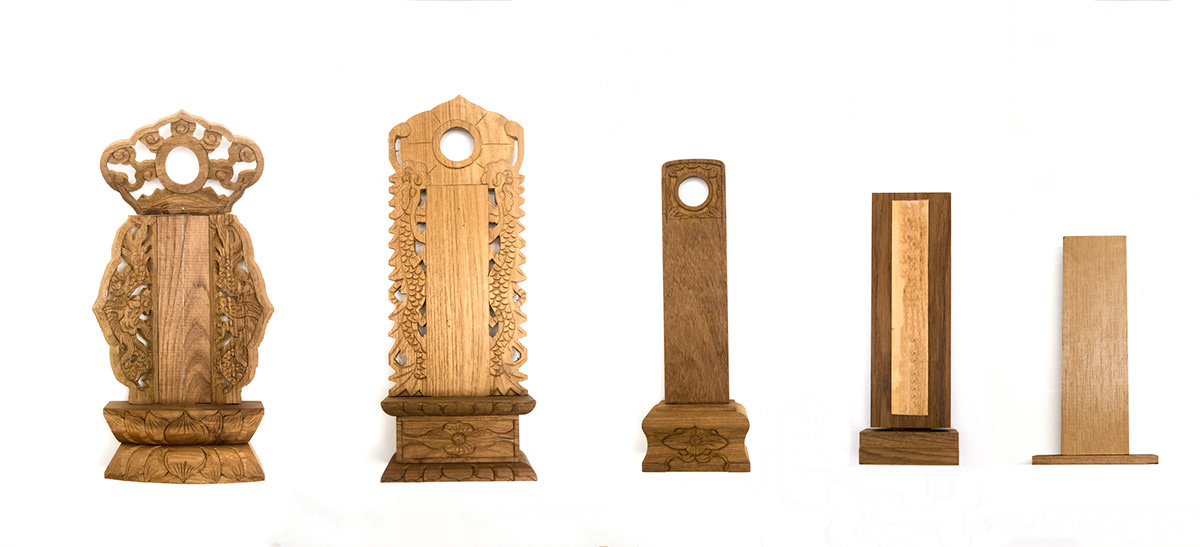
Visually, the elaborated designed tablet is like a sculptural piece with the wood material fully explored on and its ‘soul’ brought out by the carver. The design visually moves upwards due to a heavier base and an upward pointing carved out wooden piece at the top. Comparatively, the one on the right feels more like a signage with almost no life. Its machine mass-produced quality pales in comparison to the hand crafted ones that is refine and pays attention to detail yet the society appears to favour the cheap mass-produced ones. This language is adopted to highlight the fading of the tradition.
TYPOGRAPHY

Typeface choices were carefully selected to enhance differences in skill sets from one that is hand crafted to one that is mechanized—the typeface transits from one with great difference in stroke weights to a bold Chinese sans-serif typeface and finally to a hairline sans-serif typeface.
E-INVITE POSTER
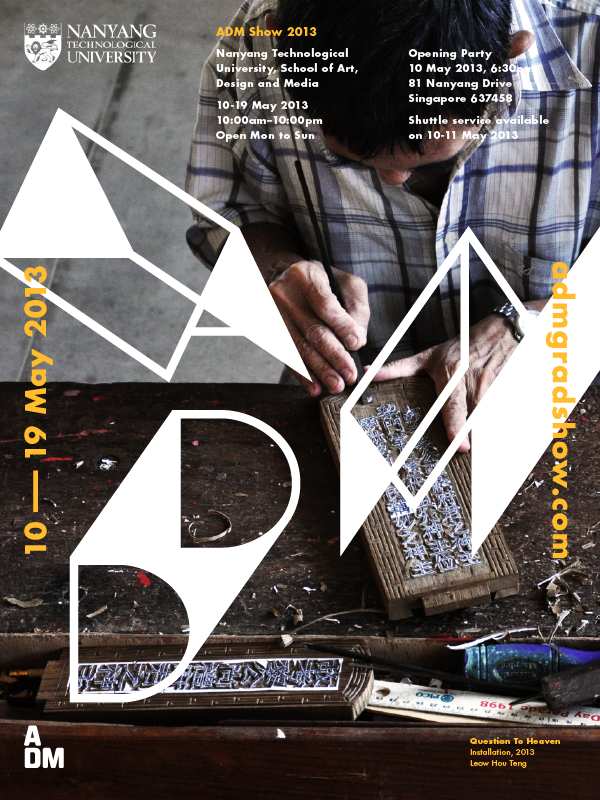
By Qu'est-ce Que C'est Design
http://www.quest-ce.com/
WORK IN-PROGRESS

Placing on the floor
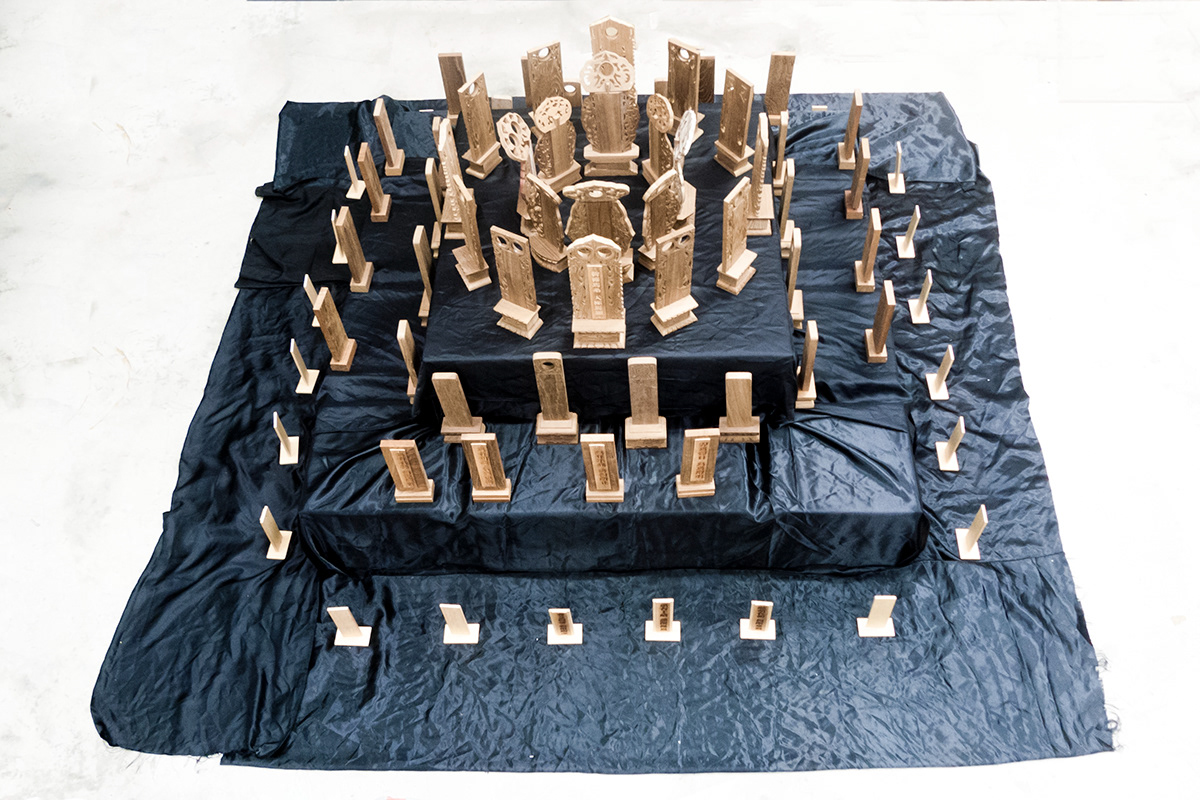
Placing it in tiers
For the ancient Chinese, Heaven with its revolving luminaries is round like the head; Earth spreading in the four directions is rectangular like the feet.
(Graham)
Hanging tablets with a mini lightbox in the middle
Questions to Heaven (2013)
80 Ancestral Tablets, Lightbox 1.8m x 1.8m, Video Footage 2:20min
--------------------------------------
80 Ancestral Tablets, Lightbox 1.8m x 1.8m, Video Footage 2:20min
--------------------------------------
Full report available upon request.
--------------------------------------
A Collaborative Effort
A Collaborative Effort
Leow Bock Kiong (Father)
Leow Hou Teng (Artist)
--------------------------------------
Acknowledgement
Asst Prof Dr. Nanci Takeyama
Leow Hou Teng (Artist)
--------------------------------------
Acknowledgement
Asst Prof Dr. Nanci Takeyama
--------------------------------------
Nanyang Technological University
School of Art, Design & Media


